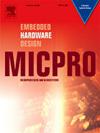在区块链中检测时间漂移以确保硬件时间证明
IF 2.6
4区 计算机科学
Q3 COMPUTER SCIENCE, HARDWARE & ARCHITECTURE
引用次数: 0
摘要
区块链技术允许在互不信任的参与者之间创建带有时间戳的、共享的和复制的事件历史。为了在共享历史上达成一致,区块链使用共识协议,例如比特币中的中本聪协议。该协议依赖于通过工作量证明(PoW)机制在统计上确保两个块之间经过的时间的证明。然而,PoW严重依赖于计算,不适合嵌入式系统。硬件时间证明(PoHT)旨在通过设计提供一种安全的低功耗运行时间证明机制。PoHT嵌入在模块系统(SoM)中,该模块具有ARM Cortex-A7微处理器,具有TrustZone和可信平台模块。本文重点研究了在温度变化条件下对时钟振荡器进行攻击的经过时间测量的安全性。它提出了各种可用时间源的整合,以及时间漂移检测的解决方案。在此基础上,提出了时间漂移检测系统的嵌入式架构,并对系统进行了实验测试。本文章由计算机程序翻译,如有差异,请以英文原文为准。
Detecting time drifts for securing Proof of Hardware Time in blockchain
Blockchain technology enables the creation of a timestamped, shared, and replicated history of events among participants who do not trust each other. To agree on the shared history, the blockchain uses a consensus protocol, such as Nakamoto’s protocol in Bitcoin. This protocol relies on a proof that statistically ensures the elapsed time between two blocks by design through the Proof of Work (PoW) mechanism. However, PoW relies heavily on computation and is not suitable for embedded systems. Proof of Hardware Time (PoHT) aims to provide a secure by design elapsed time proof mechanism with low power consumption. PoHT is embedded in a System on Module (SoM) that features an ARM Cortex-A7 microprocessor with a TrustZone and a Trusted Platform Module. This paper focuses on the security of the elapsed time measurement during PoHT, conducting experimental attacks targeting clock oscillators under temperature variations. It presents a consolidation of the various available time sources, as well as a solution for detecting time drifts. Furthermore, an embedded architecture for the time drift detection system is outlined and experimental testing of the system is performed.
求助全文
通过发布文献求助,成功后即可免费获取论文全文。
去求助
来源期刊

Microprocessors and Microsystems
工程技术-工程:电子与电气
CiteScore
6.90
自引率
3.80%
发文量
204
审稿时长
172 days
期刊介绍:
Microprocessors and Microsystems: Embedded Hardware Design (MICPRO) is a journal covering all design and architectural aspects related to embedded systems hardware. This includes different embedded system hardware platforms ranging from custom hardware via reconfigurable systems and application specific processors to general purpose embedded processors. Special emphasis is put on novel complex embedded architectures, such as systems on chip (SoC), systems on a programmable/reconfigurable chip (SoPC) and multi-processor systems on a chip (MPSoC), as well as, their memory and communication methods and structures, such as network-on-chip (NoC).
Design automation of such systems including methodologies, techniques, flows and tools for their design, as well as, novel designs of hardware components fall within the scope of this journal. Novel cyber-physical applications that use embedded systems are also central in this journal. While software is not in the main focus of this journal, methods of hardware/software co-design, as well as, application restructuring and mapping to embedded hardware platforms, that consider interplay between software and hardware components with emphasis on hardware, are also in the journal scope.
 求助内容:
求助内容: 应助结果提醒方式:
应助结果提醒方式:


